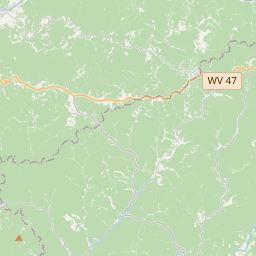Engle Homestead
Historical marker location:
Glenville, West Virginia
( Marker is on Little Kanawha Parkway (West Virginia Route 5) just east of 3rd Run Road (County Route 20), on the right when traveling east.)
Marker installed: 1981













© OpenStreetMap contributors
The West Virginia State Capitol, located in Charleston, was completed in 1932 and features a gold dome that is taller than the dome of the United States Capitol in Washington, D.C.
About Gilmer County
Gilmer County Timeline
Gilmer County, located in West Virginia, has a rich history dating back to the early 19th century. The county was formed in 1845 and named after Thomas Walker Gilmer, a Virginia governor and U.S. Secretary of the Navy. Originally inhabited by Native Americans, the area was later settled by European immigrants, primarily of German and Irish descent.
In the mid-1800s, Gilmer County experienced a boom in the timber industry. Vast forests covered the region, and logging became a major economic activity. Lumber mills were established throughout the county, providing jobs and fueling growth. The advent of the railroad in the late 1800s further accelerated the development of the timber industry, as it enabled efficient transportation of lumber to other markets.
During the Civil War, Gilmer County was divided in its loyalties. Many residents sympathized with the Union, while others sided with the Confederacy. The county saw brief clashes between the two factions, but the impact of the war was relatively limited compared to other areas. After the war, Gilmer County slowly recovered and diversified its economy. Agriculture, mining, and manufacturing emerged as additional sources of employment and prosperity.
Today, Gilmer County is known for its scenic beauty and rural charm. It is home to the Glenville State College, a small liberal arts institution that has played a significant role in the community since its establishment in 1872. The county also boasts natural attractions like Cedar Creek State Park, which offers opportunities for outdoor recreation such as camping, fishing, and hiking. Overall, Gilmer County's history reflects the resilience and adaptability of its residents in the face of economic and social changes.
In the mid-1800s, Gilmer County experienced a boom in the timber industry. Vast forests covered the region, and logging became a major economic activity. Lumber mills were established throughout the county, providing jobs and fueling growth. The advent of the railroad in the late 1800s further accelerated the development of the timber industry, as it enabled efficient transportation of lumber to other markets.
During the Civil War, Gilmer County was divided in its loyalties. Many residents sympathized with the Union, while others sided with the Confederacy. The county saw brief clashes between the two factions, but the impact of the war was relatively limited compared to other areas. After the war, Gilmer County slowly recovered and diversified its economy. Agriculture, mining, and manufacturing emerged as additional sources of employment and prosperity.
Today, Gilmer County is known for its scenic beauty and rural charm. It is home to the Glenville State College, a small liberal arts institution that has played a significant role in the community since its establishment in 1872. The county also boasts natural attractions like Cedar Creek State Park, which offers opportunities for outdoor recreation such as camping, fishing, and hiking. Overall, Gilmer County's history reflects the resilience and adaptability of its residents in the face of economic and social changes.
Gilmer County Timeline
This timeline provides a condensed summary of the historical journey of Gilmer County, West Virginia.
- Gilmer County is formed in 1845 from parts of Lewis and Kanawha Counties.
- 1855: Glenville becomes the county seat.
- The Civil War impacts the county, with skirmishes fought and soldiers from Gilmer County serving in the Confederate and Union armies.
- In the late 1800s, Glenville State Normal School (now Glenville State College) is established, becoming an important educational institution in the region.
- Early 1900s: The county's timber and coal industries see significant growth, leading to increased population and economic development.
- 1921: The county courthouse in Glenville is destroyed by fire, resulting in the construction of a new courthouse later that year.
- During the mid-1900s, declines in the coal and timber industries impact the county's economy.
- 1985: The creation of Cedar Creek State Park provides recreational opportunities for locals and visitors.
- 2002: Gilmer County is heavily affected by severe flooding caused by the remnants of Hurricane Ivan.
- 2013: Glenville State College celebrates its 140th anniversary, highlighting its continued role in education.